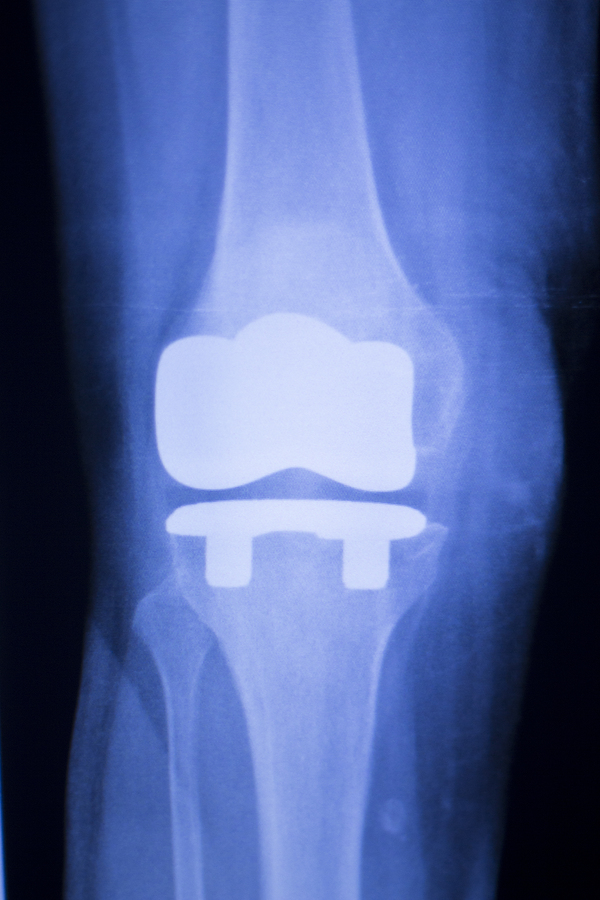 Gina Thomas—Chief Development Officer, Lumere
Gina Thomas—Chief Development Officer, Lumere
The January 13 New York Times article titled “Can Your Hip Replacement Kill You?” might seem dramatic, but it’s not an overstatement. If we don’t take a deeper dive into appropriate utilization from a clinical perspective—including indications and safety data— patient care will be negatively impacted. Dr. Tower, a patient mentioned in the Times article, is a great example. He’s an orthopedic surgeon who chose his own hip implant for his surgery, and it led to great harm.
If healthcare organizations can align their strategies—whether margin improvement, quality initiatives, or transformation in performance to care variation—by leveraging utilization data to evidence, everyone wins, including the patient whose safety is improved. Professionally, I embrace this approach, but my passion also stems from unfortunate personal experiences. My own mom died
48 hours post-op after an elective Nissan fundoplication surgery using a robotic laparoscopic approach. Evidence (that wasn’t easily at my disposal or understandable at the time) would have given us lifesaving insight. My mom was also a nurse and if her surgeon had more access to the data and evidence, he would have laid out the options, and her death might have been avoided.
Utilization tools that bring in safety data with the evidence can help organizations make the best decisions for their patients. The FDA approval process as the default measure isn’t dependable since we know that approval is given as long as the manufacturer can show that the requested technology is like previously approved technologies. This is quite scary when you think about it. Let’s improve healthcare performance with appropriate and safe decisions with solid utilization tools and better protect patients like Dr. Tower, my mom, and many others.
What Makes a Great Utilization Tool?
Healthcare organizations often try to approach utilization costs using price benchmarking tools that might give some insight into outliers of utilization by looking at volume. However, these tools lack many important factors. There is appropriate variation by different indications and patient populations, which standard price benchmarking tools can’t show.
Challenges with many benchmarking tools: Comparisons are based often on manufacturer-recommended similarities rather than clinical indications of the drug or product in question. Some utilization tools compare the cost of what one organization pays to similar-size peers, while other tools compare utilization to quality indicators per procedure.
Categorized data: As an example, a manufacturer may put antibiotic-loaded bone cement into its own separate category based on the components of the cement rather than leveraging the evidence around actual indications for all bone cement, whether antibiotic-loaded or plain.
Categorizations shouldn’t default to manufacturer comparisons or product attributes only.
A study in the Orthopaedic Journal of Sports Medicine details supply cost variation in rotator cuff repair at a single hospital. The article notes wide variation in total supply cost per case, with the most expensive repair costing nearly 12 times more than the least expensive. While some total-case cost variation is expected, the journal also highlights that “the variation in cost between materials that serve specific purposes is perhaps the most interesting and clinically relevant finding.” For example, the cost of suture needles ranged from $140 to $995—which is where many price benchmarking tools used in utilization projects stop.
The challenges are complex. Spend must be categorized into clinically equivalent groups, with outliers identified at this detailed level. The comparators in a utilization tool require a few more details with outcomes and the relevant clinical evidence provided to relate practice to clinical evidence.
Applying Science and Rigor
The ability to understand product groupings by indication—which can include attributes of the product, but more importantly needs to include the indications and supporting evidence—is essential for utilization tools.

Why Is It So Difficult?
So how do you take that science and apply it to actual practice without analysis paralysis? There is NO tool that will answer every question: What is the total cost per case pre-operatively, perioperatively, and post operatively? What are that patient’s comorbidities? What was the procedure time? Are we comparing at the DRG level or ICD-10 level? Did they seek other reatment after dismissal from the facility? What other factors contribute? Social status? Nutritional status? Other medications, overall compliance to therapy and follow up? What are the outcomes? What is the quality of life for the patient in their daily living?
See what I mean? Don’t get stuck by trying to answer every question.
GO: Start by understanding the greatest opportunities based on your healthcare organization’s goals. If your organization is focused on achieving a ‘Center of Excellence’ status in orthopedics, start there. If it’s a major margin improvement project, then start with that in mind. Thinking strategically before you start will drive how you leverage the best utilization tools and information.
Ensure you have a tool that, at a minimum, can facilitate conversations between physicians and hospitals leaders around utilization that doesn’t start with price. A Center of Excellence focus could provide better overall outcomes with lower financial costs, physician costs, and emotional costs to patients.
Patient expectations:
· The patient expects all of this without unnecessary waste and costs.
· The patient expects decisions to be in their best interest from a quality of care perspective, meaning efficacy and safety.
· The patient assumes those clinical decisions are made leveraging expertise and knowledge.
Case Study: Center of Excellence Orthopedics. A mid-size health system in the Midwest is establishing an orthopedic service line that could be marketed as a ‘Center of Excellence’. They collaborated with physicians, patients, and service line leaders to understand the perspectives of each stakeholder. Let’s break down the questions to be answered and criteria for the utilization tools that you will need as part of the Center of Excellence utilization component:
· What are my largest savings opportunities? What is already under review? What is not on my radar that should be? Utilization dashboards that keep these answers front and center give you guidance and prioritization.
· In my opinion, all tools should have an intuitive, easy-to-use search bar, like Amazon. Don’t we all like to search in this manner?

· Let’s say you find opportunities in the category of total joints and want to dive deeper:
a. Ortho>Arthroplasty/Trauma/Sports Med
i. Arthroplasty>Knees/Hips/Shoulders
· Tools that can segment out drugs and devices to pinpoint the outliers and culprits would be advantageous.
· The utilization analysis should include the ability to drill into the specific procedures, as in this case and type: Knees>Primary/Revision
 Now comes the fun part where it’s easy to get lost in the data. (Remember my earlier point about analysis paralysis!) Find one area of drug or device utilization that varies the most in the data, which can be easy with good utilization tools that include case load, drug/device cost per case by physician and comparators to the physicians internally, and perhaps external benchmarks.
Now comes the fun part where it’s easy to get lost in the data. (Remember my earlier point about analysis paralysis!) Find one area of drug or device utilization that varies the most in the data, which can be easy with good utilization tools that include case load, drug/device cost per case by physician and comparators to the physicians internally, and perhaps external benchmarks.
Most organizations struggle with their action plans when the foundation of their plan is cost geared only. A number of organizations bring in quality metrics or other comparative information. Many organizations have so much data that they end up in that paralysis stage or else fall into the vicious cycle of trying to answer every question, and they either don’t make a decision, endure lengthy battles and have scars to prove it, or they just give up and move on to something easier!
Instead of getting stuck with many data points that take you off track, let’s stick with our utilization best case scenario that allows us to dive into opportunities. I will profile arthroplasty, where we see variation in bone cement and pain management therapies in hips and knees specifically. Overuse of medications lead to negative consequences. We’ve seen that the overuse of antibiotics has led to superbugs, making it more challenging to manage infections.
Expert Guidance from the American Academy of Orthopaedic Surgeons:
· Utilization tools that can lead to action and productive conversations between physicians and healthcare leaders are grounded in evidence AND data, not one or the other.
· This Center of Excellence in orthopedics would not want to support therapies that are trending high in serious adverse events. Patients wouldn’t even think this was possible that a center of excellence might be using a therapy on them that has been reported with high adverse event rates or other negative consequences when there are other options. Good utilization tools should include this information. Physicians don’t have the time to research this information and even though it’s public data, it’s very hard to find and make sense of it when you are trying to compare categories of drugs or devices.
· Utilization tools should show alternatives that are categorized by the evidence, not by what one organization currently buys or what is on a contract. Without a broader lens, your negotiating power is limited. Your organization needs to see the evidence of other alternatives to compare them to what is currently used. In the case of bone cement, the indication and evidence is enlightening and gives you actual direction. Without the evidence included, the clinical decisions can be harmful to the patient.
· Utilization tools should answer the following questions in this example:
a. Is the evidence conclusive regarding the level of evidence, i.e., opinion versus random controlled studies?
b. Is the evidence answering the questions of indications in primary versus revisions?
c. Does the evidence cite indications by type of bone cement?
d. Does the evidence cite alternatives?
e. Can the evidence be applied to your physician’s utilization and show the outliers?
f. Where is the cost comparable to your physicians and the evidence?
· There’s enough data in just this one example without the distraction of other data points. In this case, having the products and attributes of the bone cement. Again, when you have this information tied to evidence, you can take action.
· Utilization tools shouldn’t stop with just data and evidence but should give you actual insight and strategies on your course of action.
· A tool that can provide physicians insights specific to them and the aligning evidence and outcomes is invaluable.
a. Physicians rely on their expertise but when presented more information that is grounded in science, the physician can apply their expertise and knowledge to additional information and everyone wins. Patients are treated most effectively. Physicians can have greater comfort when their decisions are made with a wider lens of knowledge. Organizations will reap the benefits from efficacy, costs, and patient satisfaction.
MYTH: Physicians have all the information needed to be most effective in their selection of therapies for their patients.
FACT: How could they? Physicians are in the dark so often on the evidence aligned to costs. Physicians would have to read 5-7 hours per day every day to keep up with the peer reviewed evidence let alone try to match that to their own practice. In the case of bone cement, there are over 59 applicable studies, just on bone cement. Physicians have reported they are often “blind” to the actual costs of their clinical decisions and this happens on a daily basis. Multiply this by the number of drugs and devices used by an orthopedic surgeon. No wonder we see variation!
· Now let’s really go BIG. Why couldn’t you build utilization parameters into the care pathways? This is done in EHRs for other treatment choices. If you had the evidence for bone cement indications by procedure type, the care pathways could incorporate this and then you could measure the outliers when this didn’t happen.
· THINK OF THE POSSIBILITIES! Utilization tools with the right level of data and evidence can set you up well for negotiation strategies. Why purchase all types of bone cement when the evidence doesn’t align? Why purchase certain bone cement if the safety data is trending towards the red? Why pay more for one bone cement versus another when the evidence isn’t resulting in improved outcomes?
· RESULT: If you do the right thing, the money will come!
· Selecting the utilization tool to use:
a. Understand the normalization process of the data. Quality of the data is much more important than the quantity.
b. How often is the information updated? Set expectations to reasonable updates. How often are you acting on the data? If your governance process or performance improvement processes with clinicians and service lines are consistent, monthly updates would be reasonable. Nirvana-build this into your EHR for real time use!
c. Can your utilization tool track the decisions made?
· The utilization output should facilitate conversations with the physicians around their utilization from their perspective, meaning the outcome and quality of care delivered.
· The information should be easy to understand. And, the layout of the information shouldn’t be confusing. The information should meet the needs of different audiences, i.e., clinicians, service line leaders, executives, etc.
· Can you quickly navigate around the information?
· Do you have the answers to the utilization questions that are most opportunistic? For instance, if you were drilling into the bone cement example, can you drill into the outliers against the evidence? Can you compare physician use patterns by indication? By cost?
· Can you share the information easily? Or is it manual hard copy print and share? Can you export the information to a PDF file and easily send an understandable summary to other stakeholders?
· If the information is web-based, are simple graphics available to provide a picture of the analysis?
· A utilization tool should alert you to trends in the market and when utilization is outside the parameters set either by decisions made or certain indications.
Appropriate utilization and the data around the decision is challenging, but it’s worth it, just ask Dr. Tower.
|
Gina Thomas, RN, MBA – As Lumere Chief Development Officer, Gina spearheads commercial strategies and helps guide product vision. With over 35 years of healthcare experience, starting as an emergency room nurse and later becoming a nursing executive, she brings a wealth of knowledge to the company, including strong expertise in preparing for new payment models, aligning clinicians, service line best practices, and executive-level approaches to resolving fragmentation in healthcare. She is passionate about patient advocacy. On a personal note, she has been married 32 years; has 2 daughters who she adores; and she says they have even found great guys whom they married! |





